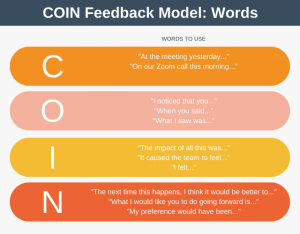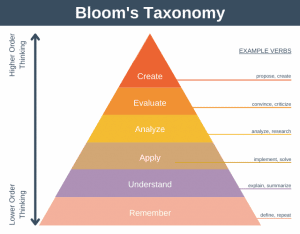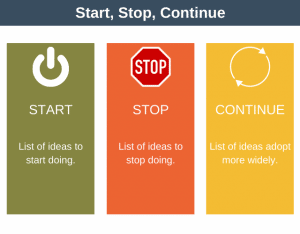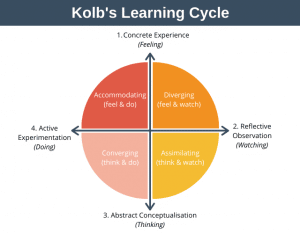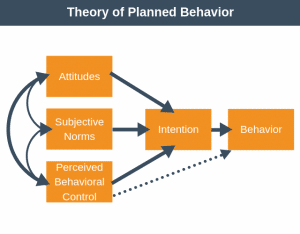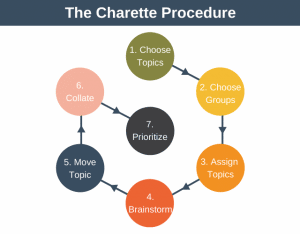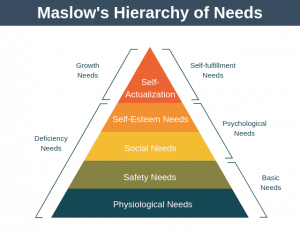To understand how the process of giving feedback works let us use the analogy of how a self-guided torpedo operates. A self-guided torpedo has a target it is trying to hit, it’s goal. The torpedo has a propulsion mechanism to push it through the water. It also has sensors, such as sonar and radar, to let it know if it is traveling in the right direction. When the torpedo receives positive feedback from its sensors it just keeps doing what it’s doing. When negative feedback informs the torpedo that it is off-course, this feedback will cause the rudder to adjust.
If the rudder is adjusted too much or too little then more negative feedback will again be received by the torpedo and a further rudder adjustment will be made. The torpedo ultimately reaches its goal by propelling itself forward, making course errors, and then continually correcting them.
As a leader, you need to be good at both giving and receiving feedback. We can learn a lot about giving and receiving feedback from our torpedo analogy. For feedback to keep people on track:
- It must be given regularly.
- There must be a goal.
- You must have metrics in place (KPIs, 360-degree feedback) to determine if you are on or off course.
- Both positive and negative feedback is needed.
If done right, feedback can increase self-awareness, encourage self-development, and provided much-needed guidance. This is why it is important to both give and receive feedback.

Just like with our torpedo, your objective when giving feedback is to either support existing behavior or help guide someone back on track by giving feedback that is constructive.
Giving Feedback Tips
Giving feedback is a skill. The person you are giving the feedback to may disagree and try to argue with you. Focus on remaining neutral and do not allow yourself to be drawn into an argument, but equally don’t shy away from the points you’re trying to make. Essentially, your feedback must be balanced but accurate so as not to allow them to under-correct their behavior, but also not to push them to overcorrect. Fortunately, there are some general principles for giving constructive feedback which can help you in this regard.
1. Start with a positive
Most people like to hear what they have done well. If we rush to criticize people we run the risk of leaving them crushed, which isn’t want we want, we simply want them to make a course correction. By starting with a positive, the person receiving the feedback is more likely to take it on board and make the necessary corrective.
This is a simplification of the classic Feedback Sandwich, so called because your feedback is between an opening and closing. With a feedback sandwich, you start with a positive, then provide the area for improvement, and finally finish on a positive. You might simply finish by reiterating the positive feedback you gave at the start of the meeting.
Example:
“Your presentation pack looked great and you did a great job of delivering the presentation. However, I was disappointed to see the key metric has dropped below the threshold value we agreed. I want this rectified immediately. But overall, great job on the presentation.”
2. Focus on the behavior, not the individual
Make sure your feedback is always about the behavior you’d like to change. You are simply providing feedback on how they behaved, not providing feedback on them as a person. This can sometimes be a subtle distinction.
Effectively by doing this, we are focusing on the description of what is wrong rather than the inference from what is wrong.
Example:
Notice how “the presentation wasn’t great”, is a lot less personal and therefore better than “your presentation wasn’t great.”, and also how “You’re not meeting the dress code” is less effective than “Those clothes don’t meet the dress code”.
3. Be Specific and clear
General feedback is not that useful when it comes to understanding exactly what has to be improved. General statements are also more likely to elicit an emotional response.
Example:
Consider the difference between, “we can’t give this presentation – it’s full of mistakes”, and “there are grammatical mistakes we need to resolve before we give the presentation”.
4. Own the feedback
Begin your feedback with “I” to show that both your thoughts and feelings are your own.
Example:
“I am concerned about progress on this project. It would really help if you could explain to me how you see progress so I can get your perspective.”
5. Focus on finding solutions
Think upfront about why you are giving the feedback. Its to correct-course and improve performance. It will be a far more positive and energizing conversation if you focus on finding solutions rather than calling out issues.
Example:
Consider the difference between “if we don’t get our website compliant with the law we will be shut down”, versus, “what steps do we need to take to make the website compliant”.
6. Be Timely
It is best to address issues or give praise as close to the event as possible. Don’t let the moment pass and have the feedback come as a bit of a shock to the person receiving it.
The exception to this rule is when the situation is serious and emotional. It’s obviously more challenging to accept feedback in this circumstance, and you don’t want to risk either party saying something they later regret.
7. Follow up
If you reach any agreements, write them down and send them to the person concerned. Going forward, remember to look for opportunities to commend the person as their performance improves on the tasks in question.
A 7-Step Feedback Process
Now that we’ve covered the general guidelines, here is a simple 7-step process for giving feedback:
1. State Your Purpose
State the reason why you are giving feedback and why it is important. Where you’re initiating feedback this will prevent nervousness and guesswork by the recipient. If you’re responding to a feedback request then it enables you to clarify and agree exactly what is to be covered.
2. Describe What You Personally Observed
Stick with what you personally have observed and stick to specific events.
3. Describe How You Felt
Describe how you reacted when you witnessed the event outlined in step 2. By describing how you felt after observing the behavior you will help the other person to understand the impact that their actions are having on others.
4. Remain Silent
In this step, you give the other person the opportunity to respond. If the person doesn’t respond, then ask “what’s your view on the situation?”. As mentioned previously, the skill here is to avoid getting drawn into an argument.
5. Focus on Solutions
Move away from the problem quickly to focus on finding a solution. You may already have a solution in mind, but it can be productive for both of you to work collaboratively to generate a solution to the problem.
6. Summarize
Now that you’ve identified the solution, summarize the action points you have agreed, and identify when you will next meet to discuss progress towards rectifying the problem. There’s no need to summarize the problem again, just focus on the solution. Agree that you will email the action steps to the person after the meeting. Summarizing allows you to ensure that there are no misunderstandings before both of you leave the room.
7. Express Confidence
End the meeting by reassuring the recipient that you have confidence in their ability to implement the action steps and rectify the problem. If appropriate, let them know your door is open should they encounter any problems.
Yellow Flags
Sometimes, after providing feedback here won’t be the substantive material improvement in behavior you were expecting. Here are some options for how to handle these yellow flag situations:
- Use your delegation skills to provide simpler instructions and remove some autonomy from the recipient.
- Agree to check-in on progress more frequently.
- Get a peer to help the recipient or to model behavior and show how it’s done.
Image credit: SumAll.
